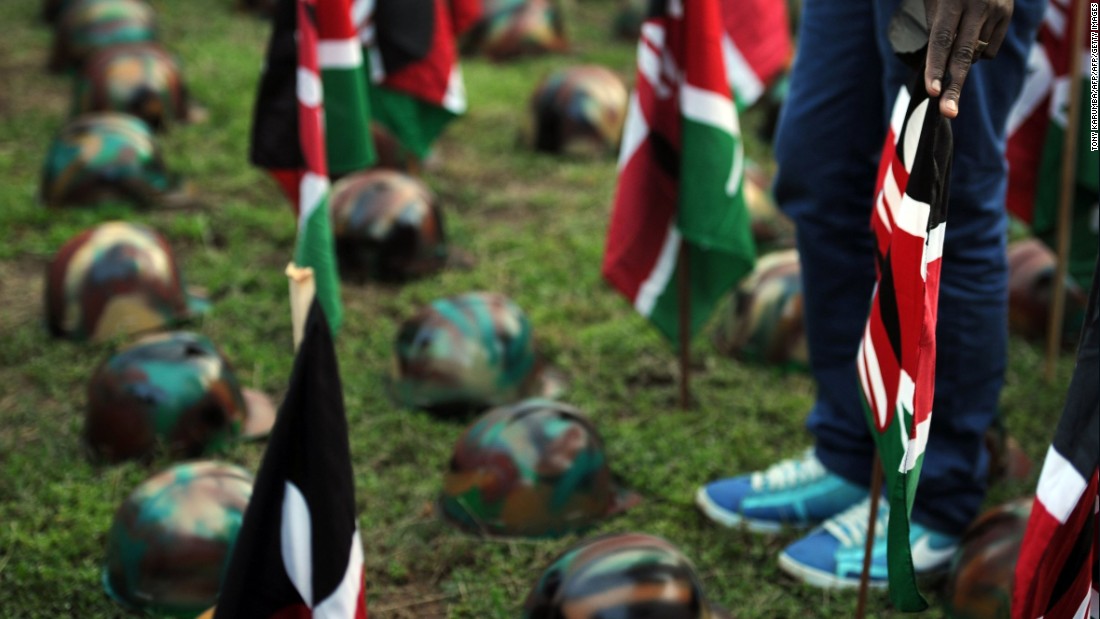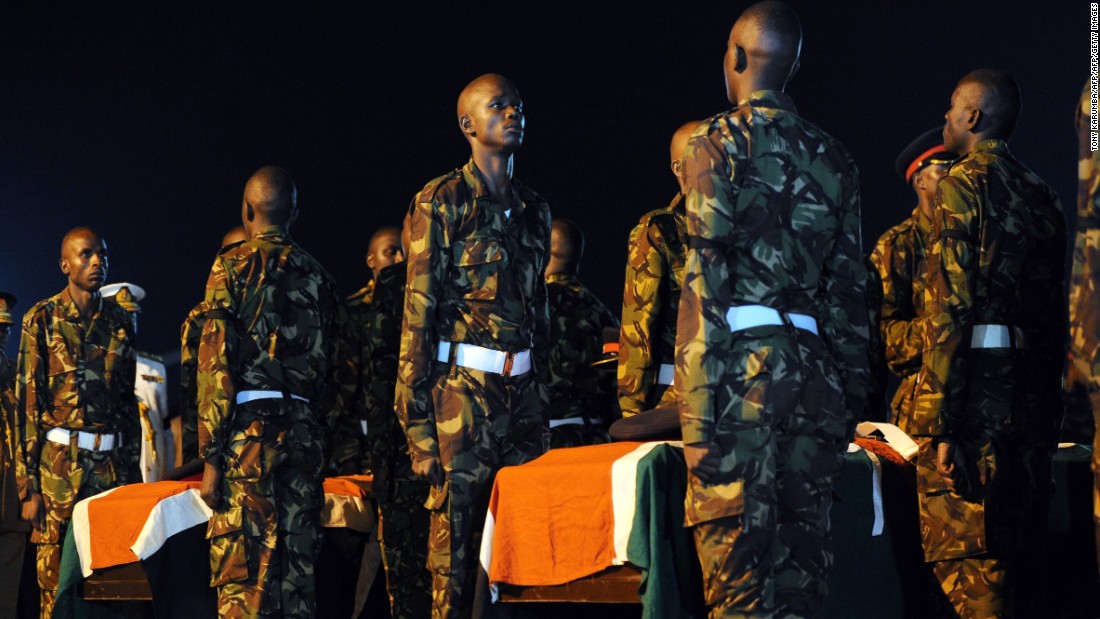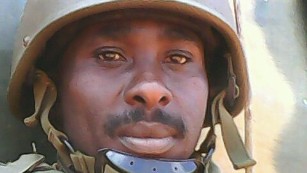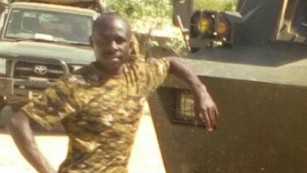Nairobi, Kenya (CNN)On January 15, a massive blast shattered the dawn calm at El Adde military base. A suicide bomber had detonated a truck loaded with explosives, the cue for hundreds of fighters clad in camouflage gear to attack.
The raid lasted the entire day; thousands upon thousands of bullets fired by some 300 Al-Shabaab militants in a brutal assault on Kenyan soldiers stationed in Somalia to fight the terrorist group.
By the time the sun set, as many as 141 Kenyan soldiers were dead -- some shot at point-blank range. That figure would make what happened at El Adde Kenya's largest military defeat since its independence in 1963.
But in the months since, there has been no national day of mourning, no roll call of honor, and no explanation.
The only clues to what happened are contained in a propaganda video made by Al-Shabaab itself.
Kenyan authorities silent
The exact details of what went on at El Adde -- and just how many Kenyan troops died there -- remains shrouded in mystery.
The Somali government says 200 Kenyan soldiers, key to the African Union's fight against al-Qaeda-linked Al Shabaab, were at the base that day.
Al Shabaab, which is known to exaggerate its figures, claims to have killed 100 Kenyans.
This time, though, the terror group may actually be underestimating: Two officials familiar with the recovery operations have told CNN that the Kenyan death toll from that day is at least 141.
Kenya's government is yet to release official figures. On the day of the attack the Kenyan Defense Force (KDF) first said its soldiers were helping to repel an attack on a Somali National Army base before stating that the KDF had incurred unspecified losses.
But as the hours wore on and rumors intensified of just how fierce and bloody the fight for El Adde was, the press releases stopped and the KDF's media wing went silent.
Information surrounding the attack needed to be handled "carefully" and "meticulously," Cabinet Secretary for Defense Rachael Omamo explained, "for the benefit of the families of our soldiers."
The KDF did not respond to CNN's repeated requests for comment and information about the attack.
Its only public admission of what happened at the base since then has been the return of four flag-draped caskets home to Kenya.
Kenyan President Uhuru Kenyatta paid tribute to the four acknowledged casualties from the raid as they were brought home: "Their bravery is undimmed. And for this, we as a nation are grateful to all of them."
In the months since, more coffins, more bodies have been quietly handed over, one by one, to the soldiers' grieving families, often bringing with them more questions than they do answers.
Remains 'missing' for weeks
Corporal James Saitoti Kuronoi's remains were subjected to seven DNA tests before they were finally identified and handed to his loved ones for burial, three months after he was killed.
As his body was lowered into a grave near that of his mother, in a quiet farming village near Narok, his eight siblings -- their faces wet with tears -- clutched each other for support.
Kuronoi's was one of some 30 burials linked to El Adde that have been reported by local media in Kenya, but there are said to have been many more services that they could not cover.
A tank driver and father of two, Kuronoi sent photos and talked regularly to his wife, brothers and sisters from his "new home" at El Adde. He was on his second deployment to Somalia.
"[He was] our baby brother," said Kuronoi's sister Jackqueline. "He was always jolly. He had a permanent smile ... And I don't know, even in the family, who will ever fill that gap."
A week before the attack, Kuronoi sent a message to his family asking them to pray for him. It was their last contact; after Al-Shabaab attacked the base, there was no news from him, he was nowhere to be found.
Jackqueline Kuronoi says the family went through weeks of uncertainty in the wake of the raid.
"You are looking for somebody ... you don't know where," she told CNN.
"You hear that some people were taken by Al-Shabaab, others are still in hiding, others were hiding and killed, some were burned beyond recognition, and you don't know where you belong. Where is our person?"
She praises the Kenyan Defense Force for its support of their family in the aftermath of her brother's death, but with no official information released by the government, she has many questions about what happened that day.
"We would like to know who are these people? They died together. How many were they?" she said.
"It is a question that will live in our minds forever, because even if you have the body, what about the rest? How many were they? How many were rescued? You don't know."
Propaganda video offers clues
Weeks later, his family offered prayers over his body at a mosque in Mombasa, before burying him in the city's Mshale cemetery in a funeral attended by hundreds of family members, friends and fellow soldiers.
His father-in-law, Mwalim Rama, told those gathered at the steamy burial ground that young people should not be put off joining the military because of attacks like the one in which Zahoro was killed.
"Fighting and dying for your country is something one should be proud of," he told the mourners. It is a message echoed by military commanders and Kenya's Commander in Chief, President Uhuru Kenyatta.
But with so few details of the raid out in the open, it has been left to the attackers themselves to tell the story of El Adde.
Well known for sophisticated propaganda techniques, Al-Shabaab released a flashy, high-definition video three months after the attack.
It shows tracer rounds lighting up the sky as a massive firefight for the base begins: Al-Shabaab militants fire AK-47s, rocket-propelled grenades and machine guns at the Kenyan troops.
The bodies of 50 soldiers can be counted; many of the men are killed execution-style on camera, while others are seen surrendering in terror. A soundtrack of gunfire is laid over the entire 48-minute long film.
In one heart-wrenching scene, a Kenyan soldier stands and tries to climb out through the hatch of his burning tank, arms raised in surrender, eyes wide as the enemy army encroaches. Al-Shabaab's cameraman focuses on the man as he is shot multiple times, sliding back inside the tank.
'Tactical disaster' for Kenya
The apparent ease with which the militants breached barriers at El Adde has surprised many security analysts -- especially since the same style of assault had been seen before in bloody attacks on AMISOM forces.
One Western diplomat based in the Somali capital, Mogadishu, told CNN this was clearly a "tactical disaster" for the Kenyans.
"How can two hundred Al-Shabaab walk across a field in broad daylight without the Kenyans noticing? Where were the KDF's machine guns?" he asked. "This is contrary to everything they have been taught, and should be doing in a hostile environment."
To prevent details of what happened at El Adde from emerging, Kenya's government used a rarely enforced law prohibiting the distribution of images or information likely to cause public fear and alarm or undermine security operations.
One local blogger who tweeted a photograph showing of the aftermath of the attack was promptly arrested. He was later released without charge.
"There is clearly an attempt to mislead Kenyans and to hide the truth about what happened," said Patrick Gathara, a political commentator and cartoonist who lashed out at the KDF and Kenyan government in local newspapers after the attack. "It is being hidden to avoid accountability."
Added Gathara, "It is all very deliberate and designed to avoid public demands for senior officials and officers to be held responsible for failures.
"The truth about El Adde is being hidden from Kenyans, not from Al-Shabaab."
Number of dead still unknown
Tellingly, Al-Shabaab's propaganda video uses the Kenyan authorities' own words against them, highlighting the inaccurate KDF press release sent in the immediate aftermath of the attack, and accusing the KDF of "distorting the truth and blatantly lying to their public."
Analysts say the KDF's lack of transparency has only provided more fodder for Al-Shabaab's ideological battle.
"Although they cite national security reasons, what they end up doing is creating an opportunity for Al-Shabaab to propagandize their victories, perhaps exaggerate them," said Peter Pham, director of the Atlantic Council's Africa Center.
"But there's no way of countering that narrative because there is no real narrative coming from the government."
"The AU [African Union] would be better served by contesting the Al-Shabaab narrative, not ceding ground to it," said Paul D. Williams, Associate Professor of International Affairs at George Washington University, who specializes in reporting on peacekeeping missions.
"Silence is not a winning strategy in the world of strategic communications," he told CNN in late January, shortly after the attack.
James Saitoti Kuronoi, Juma Zahoro and dozens of their comrades died -- unassisted and outnumbered -- at El Adde. Four months on, however, their own government refuses to acknowledge their sacrifice.
Their families remember them by name as soldiers, sons, husbands, and fathers. But to the country they served, they remain only uncounted and unknown.
#Alabingo





No comments:
Post a Comment